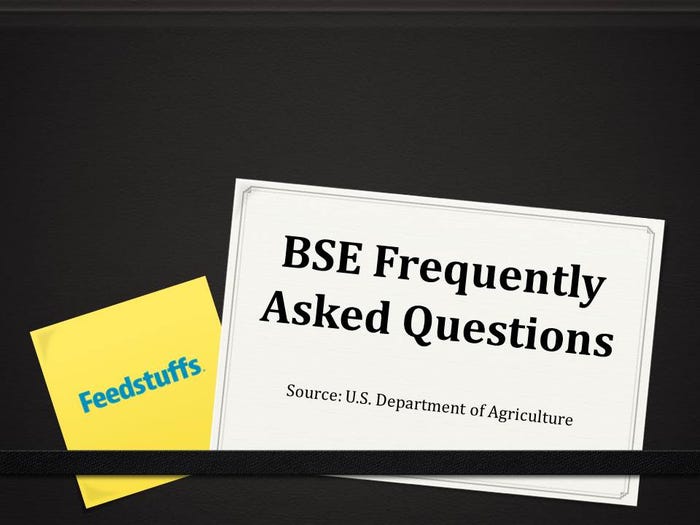10 top BSE questions
Here are answers to the most frequently asked questions regarding bovine spongiform encephalopathy (BSE).

An atypical case of bovine spongiform encephalopathy (BSE) was recently detected in an 11-year-old cow in Alabama. According to the U.S. Department of Agriculture, the animal never entered slaughter channels and at no time presented a risk to the food supply or to human health in the U.S.
The USDA Animal & Plant Health Inspection Service’s (APHIS) National Veterinary Services Laboratories determined that the Alabama cow was positive for atypical (L-type) BSE. The animal was showing clinical signs and was found through routine surveillance at an Alabama livestock market. APHIS and Alabama veterinary officials are gathering more information on the case.
Atypical BSE is different and generally occurs in older cattle -- usually eight years of age or older. It seems to arise rarely and spontaneously in all cattle populations.
This is the nation’s fifth detection of BSE. Of the four previous U.S. cases, the first was a case of classical BSE in a cow imported from Canada; the rest have been atypical (H- or L-type) BSE.
The following slides answer the most frequently asked questions regarding BSE.
The source of this information is USDA.
About the Author(s)
You May Also Like


.png?width=300&auto=webp&quality=80&disable=upscale)
